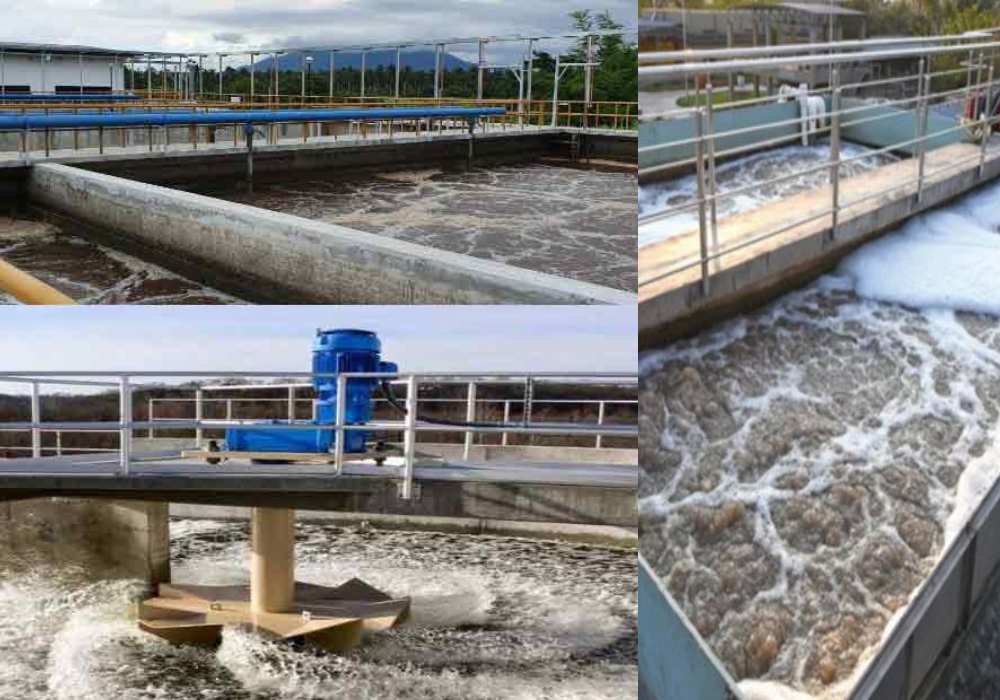Exploring Industrial Wastewater Treatment Plants in Bangladesh
Bangladesh, a land brimming with vibrant culture and dynamic growth, is also facing a crucial challenge: industrial wastewater treatment. As the nation strides towards economic prosperity, the environmental impact of industrial activity demands immediate attention. Untreated industrial wastewater, laden with chemicals, heavy metals, and organic pollutants, poses a significant threat to water pollution, public health, and the delicate environmental balance of Bangladesh.

Industrial Wastewater and its Impact
Industrial processes, encompassing textiles, tanneries, pharmaceuticals, and more, generate vast quantities of wastewater. Unlike domestic wastewater, this industrial effluent often contains harmful contaminants that traditional municipal treatment systems cannot effectively remove. These pollutants can wreak havoc on the environment, leading to:
- Water pollution: Contaminated water bodies become breeding grounds for harmful bacteria, rendering them unfit for drinking, irrigation, and aquatic life.
- Public health risks: Exposure to polluted water can cause various health issues, including gastrointestinal diseases, skin irritation, and even long-term health problems.
- Disruption of the ecosystem: The delicate balance of aquatic life is disrupted, impacting the entire food chain and biodiversity.
Therefore, effective industrial wastewater treatment becomes an essential pillar of environmental sustainability in Bangladesh.
Technologies at the Core of IWTPs
IWTPs employ a diverse range of treatment technologies, each playing a specific role in cleansing the wastewater. Let’s delve into some of the most commonly used methods:
- Activated sludge process: This biological treatment mimics a natural ecosystem, employing microorganisms to break down organic pollutants.
- Anaerobic digestion: This process utilizes bacteria in an oxygen-free environment to decompose organic matter, producing biogas as a valuable byproduct.
- Membrane bioreactor (MBR): This advanced technology combines biological treatment with membrane filtration, resulting in highly treated water of exceptional quality.
- Constructed wetlands: These man-made wetlands utilize natural processes like plant life and microbial activity to purify wastewater.
- Trickling filters: This method employs a bed of rocks or plastic media over which wastewater trickles, allowing microorganisms to attach and break down pollutants.
The choice of technology employed in an IWTP depends on various factors, including the type and volume of wastewater, desired treatment level, and available resources.
A Glimpse Inside the Operations the Journey of Wastewater Treatment
Step 1: Pretreatment: The influent wastewater undergoes screening and grit removal to eliminate large objects and settle able solids.
Step 2: Primary Treatment: This stage involves sedimentation, where heavier solids settle out, and flotation, where lighter particles are removed.
Step 3: Secondary Treatment: This crucial step employs biological treatment processes like the activated sludge process or anaerobic digestion to break down organic matter.
Step 4: Tertiary Treatment: Depending on the desired effluent quality, additional methods like membrane filtration, chlorination, or activated carbon adsorption might be employed to remove specific contaminants and achieve stricter discharge standards.
Step 5: Sludge Management: The generated sludge, a byproduct of the treatment process, undergoes thickening, dewatering, and disposal in an environmentally sound manner.
Step 6: Monitoring and Compliance: Throughout the entire treatment process, continuous monitoring ensures compliance with environmental regulations set by the Department of Environment (DoE).
Fostering a Sustainable Future Challenges and Opportunities
While significant strides have been made in industrial wastewater treatment in Bangladesh, challenges remain:
- Limited infrastructure: The existing capacity of IWTPs often falls short of the growing demand from industries.
- Technological advancements: Implementing advanced treatment technologies like MBRs requires significant investment, posing a challenge for some industries.
- Enforcement of regulations: Strengthening enforcement mechanisms is crucial to ensure all industries comply with established environmental standards.
However, amidst these challenges, glimmers of hope emerge:
- Government initiatives: The Government of Bangladesh, in collaboration with the World Bank, Asian Development Bank (ADB), and the Green Climate Fund (GCF), is actively promoting investments in water resource management and sustainable sanitation projects.
- Private sector involvement: Forward-thinking companies are recognizing the importance of environmental sustainability and investing in on-site wastewater treatment facilities.
- Public awareness: Growing public awareness about the environmental impact of industrial wastewater is fostering a sense of collective responsibility.
FAQ
Why are industrial wastewater treatment plants important in Bangladesh?
Untreated industrial wastewater pollutes water bodies, harming public health and the ecosystem. IWTPs play a vital role by cleaning this wastewater, safeguarding our environment and ensuring sustainable development.
What are the different types of technologies used in IWTPs?
Common technologies include activated sludge for biological treatment, membrane bioreactors for advanced filtration, and constructed wetlands for natural purification. The specific choice depends on the type of wastewater and desired treatment level.
What are the challenges and opportunities related to industrial wastewater treatment in Bangladesh?
Limited infrastructure, affordability of advanced technologies, and ensuring compliance are challenges. However, government initiatives, private sector involvement, and growing public awareness offer promising opportunities for a sustainable future.
